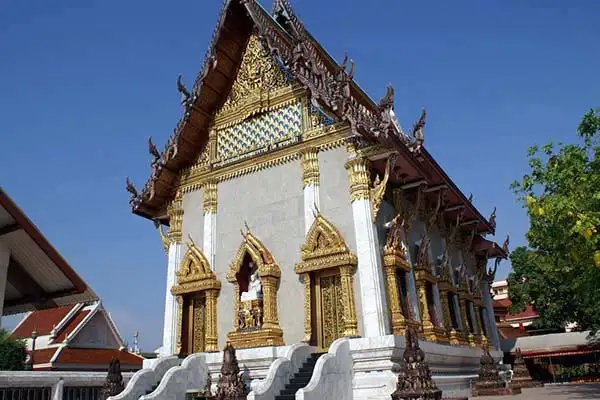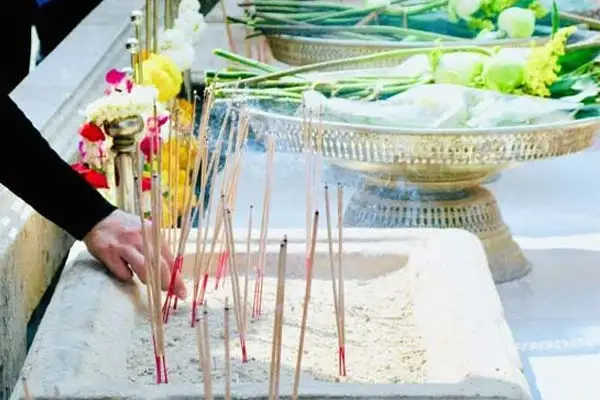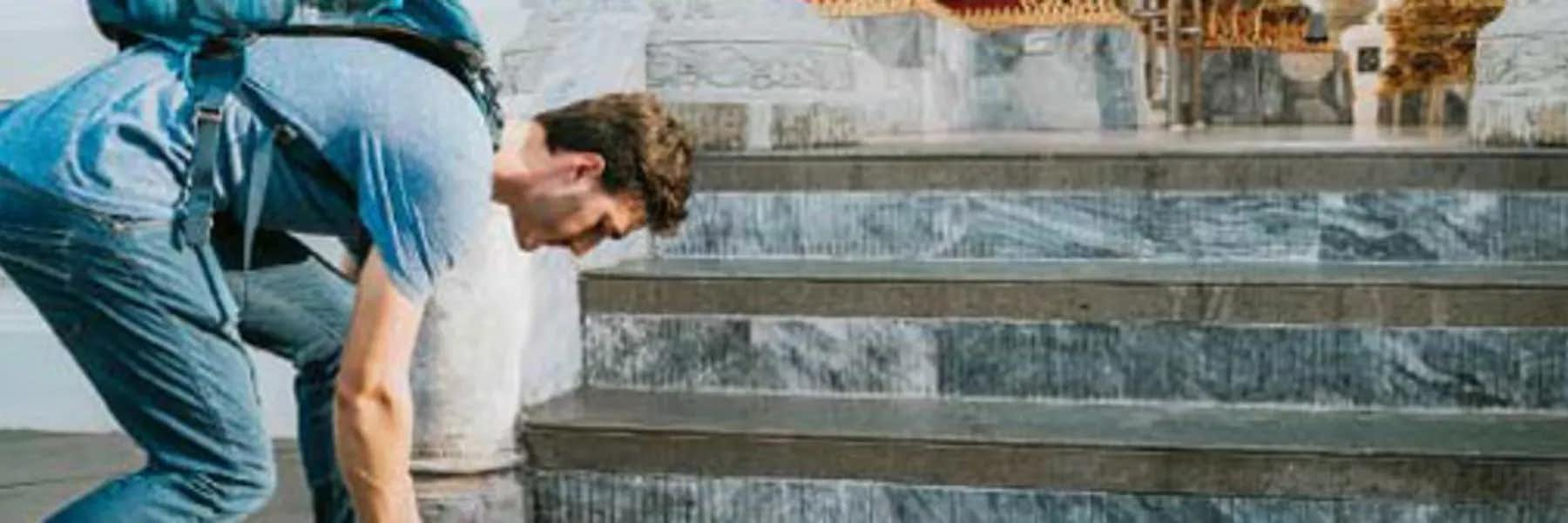With around 40,000 temples in use across Thailand, you will undoubtedly come across these beautiful, ornately decorated, and very colorful buildings no matter where you travel in the ‘Land of Smiles’. And as more than 92% of the Thai population identify as Theravada Buddhist, these temples have an essential role in everyday life.
Given how tightly interwoven Buddhism is in Thai lifestyle and culture, it is common to see people making offerings or ‘merit’. Whether it be to monks on their morning alms walk, praying at temples and shrines, or leaving food and drink at spirit houses at their own home or workplace. These simple rituals can be seen daily. On significant Buddhist days, temples and shrines become the center of peoples focus and are particularly busy.

Young boys are expected to ordain as a monk and live in the temple for a while. Some stay for just a matter of weeks or months, others longer, with a smaller number taking it as their life’s calling. Interestingly, when a young male suitor comes requesting the hand of their daughter in marriage, Thai parents will want to know long he spent as a young monk. And depending on the time, they will look on him more favorably, or not. It’s believed that the more he has learned the teaching of Buddha, the better man, husband, and father he should be.
What’s in a Wat?

Although a Thai temple is called a “Wat”, meaning temple, this term actually refers to the temple complex. The various building within the Wat could include the Bot or Ubosot (a hall restricted to monks only and used for ordination and other specific rituals). The Viharn or Wiharn (prayer hall open to monks and laypeople) is where vital Buddha images are kept and where Thai people come to pray, ask for good fortune, and seek guidance from monks. While The Chedi (also called stupa or sometimes pagoda) is the most significant and sacred structure of the wat as it is where Buddhist relics are enshrined.
Other buildings include Kuti (monks living quarters), and some wats will have a Crematorium, a small building easily identified by the tall slim chimney. A Sala, or open pavilion, is used for many purposes and open for people to simply rest. They are common outside of monastic buildings too.
You may also spot a Hor Rakang, or bell tower, which is used to summons monks to their observances. In some wats, a row of bells is rung in sequence for good luck. Hor Trai or library is where scriptures are held, and these buildings are often built, raised, and surrounded by water to avoid damage from pests.
Temple Do’s and Don’ts
Visitors are welcome in wats. Indeed some monks will be happy to practice English with you, and some wats even have ‘Monk Chats’, for visitors to learn about Buddhism. Understanding some temple etiquette can prevent inadvertently upsetting monks or other visitors. Fortunately, temple etiquette is relatively simple to follow.
Firstly, dress modestly. Cover your shoulders and shorts or skirts should be below the knees. Some wats are more flexible than others, but if you are going visiting it is best to be prepared. A scarf or sarong can be a handy addition in your bag. Wearing shoes that can be easily slipped on and off is an advantage.
Here are some tips when you visit a Wiharn (prayer hall).
Remove your shoes, hat, and sunglasses.
Step over and don’t stand on the threshold.
Keep noise to a minimum. You can chat, but be quietly respectful as you would in other places of worship.
Don’t point your feet towards Buddha (statues or images). Tuck your legs underneath you as other devotees do.
Don’t point with your finger, use an open palm.
Avoid turning your back to Buddha. Back away from Buddha statues or images and try to keep your body below their level. No selfies with Buddha in the background.
Don’t touch Buddha images
You can take photos, but avoid taking pictures of people praying.

Perhaps you are curious about monks. They are usually friendly and welcoming, although they may be shy and have limited English.
When greeting a monk, wai, by placing your hands together in a prayer position and slightly bowing forward. Monks aren’t expected to return a wai.
Avoid touching a monk, if you want to give something to them, place it down and allow them to pick it up. A woman must not touch a monk.
Don’t photograph monks, unless they have agreed.
If a monk enters, it is customary to stand.

Making Merit (Wai Phra)
Visitors are welcome to make merit or give offerings at temples but do not feel obliged to. Although there are no hard and fast rules, there is usually a traditional process. Most importantly, be highly respectful. You can purchase an offering or Wai Phra kit in advance, or at the temple grounds. Usually, it will include a candle, flower/s, three incense sticks, and maybe small squares of gold leaf.
Firstly, light the candle and place it with others. Next, put the flowers into the water or on the provided tray. Light the incense sticks from the candle and hold these between your hands. Take a kneeling or seated position with your feet pointing away, raise your hands with the incense to your chest and pray. Place the incense in the sand, add gold leaf to Buddha images, and finally make three deep wais placing your hands to the ground each time. Ensure you walk around sacred objects clockwise. Take a few moments to observe others and follow their lead. There are several other ways that people make merit, including making a donation.
Wats are rich with imagery and symbolism and can help you learn and appreciate more about Thai culture and lifestyle. Reading before you visit enables you to enjoy it more, rather than just admiring the color and beauty of these stunning places of worship.
Related Articles
Find Your Dream Retirement in Thailand
